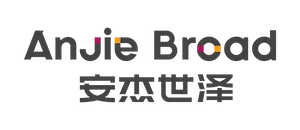The automobile industry has been under the radar of China's antitrust enforcement for a number of years. Since 2014, the agency had successively issued fines against many players in the automobile supply chain, including auto parts manufacturers, and motor vehicle suppliers and distributors. By November of 2019, the aggregate antitrust fine in the car sector reached up to RMB 2.5 billion. Excepting those cartel-related penalties against 12 Japanese auto parts manufacturers in 2014, all of other penalties related to the violation of vertical restraints.
China's antitrust agency's greatest competition concerns in the automobile sector relate to vertical restraints. Possibly underscoring this concern, the newly published Antitrust Guidelines on Automobile Industry (the "Automobile Antitrust Guidelines") placed its main focus on clarifying issues arising from vertical restraints. Therefore, it is critical to take stock of this publication in order to better understand the enforcer' attitude towards vertical restraints for companies in the automobile sector.
To help companies in the automobile industry better make their own assessments on antitrust compliance in China, this article explains the antitrust rules related to vertical restraints provided in these guidelines and analyzes their implications.
I. The Assessment Framework for Vertical Restraints
On whether a given vertical restraint constitutes a vertical monopoly agreement banned by the AML, the Automobile Antitrust Guidelines clarify a three-step assessment framework that China's antitrust agency will usually employ. First, the agency determines whether a given agreement falls into the scope of vertical monopoly agreements prohibited by the AML. Second, it assesses whether the "assumed exemption", which is similar to the block exemption in the EU and will be further explained later, could be applied. Third, if the assumed exemption is not applicable, the agency will assess whether an individual exemption could instead be granted.
II. Conditions for Assumed and Individual Exemptions
One valuable development in the Automobile Antitrust Guidelines is how they clarify the conditions under which the assumed exemption applies. Note that although at present the assumed exemption mechanism only applies to the automobile sector, theoretically it can also be of reference value to other industries.
According to these guidelines companies that lack appreciable market power could, when imposing vertical restraints on territories or customers, usually be exempted from being considered as imposing a vertical monopoly agreement. These guidelines further clarify that a company usually does not have market power if its market share in the relevant market is below 30%, though this is a rebuttable presumption.
For individual exemptions, the Automobile Antitrust Guidelines do not provide rules for the automobile sector besides those already described in Article 15 of the AML. However, with a view to clarifying its applicability for companies, these guidelines do illustrate circumstances under which assumed exemptions or individual exemptions usually apply. They are explained further in the below sections.
III. Enforcement Attitudes Toward RPM in Automobile Sector
It should be noted that in practice, China's antitrust enforcement agency typically finds fixing resale or minimum resale prices ("RPM") to be per se illegal, although judicial practice shows a different attitude towards RPM by Chinese courts. The Automobile Antitrust Guidelines implicitly confirm that the assumed exemption will not apply to RPM. However, the guidelines do not exclude the possibility of granting an individual exemption to companies fixing RPM, subject to specific circumstances, even though the chance of doing so is relatively low. To provide more guidance, these guidelines further provide four scenarios where individual exemptions are more likely to be granted.
First, fixing RPM in the short term for new energy automobiles may be individually exempted. This is in light of their benefits for energy conservation, environmental protection, avoidance of service free riding. The aforesaid "short-term" is further clarified in these guidelines as constituting nine months from the day when the automobile supplier issues its first wholesale invoice. This term is subject to potential adjustment in the future.
Second, where the distributor only serves the function of a middleman, fixing RPM may also be individually exempted. This scenario mainly refers to when the automobile suppliers directly negotiate the sales price with specific third parties or ending consumers, while the distributor just provides ancillary sales functions such as delivery, collection of payment, issuance of invoice and other services.
Third, fixing RPM in the course of government procurement may be individually exempted. This is because in practice automobile suppliers and distributors usually are required to collectively bid after agreeing on the quotation in government procurement projects. If the distributor in a government procurement scenario only plays a role in assisting completion of transaction, like a middleman, then they may also be exempted.
Fourth, the RPM imposed by automobile suppliers in e-commerce may be also individually exempted. This exemption should be narrowly interpreted, as when automobile suppliers directly sell to ending users through e-commerce platforms, and the distributor only plays a role fulfilling the sale, such as delivering the automobile, collecting payment and issuing the invoice for such transactions concluded through e-commerce platforms.
IV. Enforcement Attitudes Toward Territorial and Customer Restraints in the Automobile Sector
As mentioned above, restrictions on territory and customers imposed by suppliers with a market share below 30%, with justifiable reasons, can be assumed to be exempted. To provide further guidance, these guidelines illustrate the circumstances where the assumed exemption is usually applied. These are elaborated below.
First, the distributors are required to only engage in distribution activities within their own business premises, but are not restricted from passive sales and cross-supply with other authorized distributors. Second, the suppliers restrict distributors from actively selling to the exclusive territories or customers which said suppliers reserve for another distributor. Third, the suppliers restrict wholesalers from directly selling to end users. Fourth, to avoid the spare parts being used by customers to produce the same products as the suppliers, the suppliers restrict distributors from selling spare parts to such customers.
In the meantime, to provide further clarification, these guidelines also provide circumstances where the assumed exemption usually is inapplicable. This includes restricting passive sales and cross-supply between distributors, and restricting distributors and service providers from supplying spare parts for repair and maintenance purposes to ending users.
However, it should be noted that, even if the assumed exemption cannot be applied to specific territorial or customer restrictions, companies theoretically could continue to assess whether they may instead be eligible for an individual exemption.
V. Indirect Vertical Restraints on Aftersales Service and Distribution of Spare Parts
Concerns over insufficient competition in the automobile aftersales market for repair and maintenance services have been articulated for a long time. These concerns are also reflected in the Automobile Antitrust Guidelines, which specifically stress that, if automobile suppliers impose unreasonable restrictions on the aftersales services and distribution of spare parts through warranty terms, they may raise competition issues. Such circumstances include but are not limited to, first, the automobile suppliers requiring that all maintenance work not covered by their warranty be completed by service providers within an authorized maintenance network, and denying said warranty when the supplier uses service providers outside that network. Second, for parts not covered by the warranty, the automobile suppliers conditioning performance of said warranty on that distributors and service providers' exclusive use of original parts. A third instance is when automobile suppliers restrict their maintenance network from providing aftersales service to parallel imported vehicles.
VI. Other Vertical Restraints Related to Sales and Service Capacity
In addition, the Automobile Antitrust Guidelines also enumerate other typical circumstances where a vertical monopoly agreement may be found, to remind companies of the potential antitrust risks.
First, the automobile suppliers obligate distributors and service providers to purchase automobiles, aftersales spare parts, consumables, repair tools, and testing instruments that distributors and service providers did not order. Second, the suppliers force distributors or repairers to accept unreasonable sales targets, inventory variety, automobile quantities, or aftersales parts orders. Third, the suppliers force distributors to bear the costs of advertising and promotion in the name of suppliers or restrict the specific ways and media that the distributors use to carry out promotions, at their own expense. Fourth, the suppliers force distributors or service providers to use only the services of specific design or construction companies, or require them to use only specific brands, suppliers and supply channels for building materials, general equipment, information management systems, or office facilities. Fifth, the suppliers restrict distributors from dealing with other suppliers' goods. Lastly, the suppliers refuse supply or terminate the distribution agreement ahead of time due to the distributors or service providers engaging in activities that promote competition.
Conclusion
The Automobile Antitrust Guidelines does not only clarify the rules for market players in the automobile sector, but also provide valuable reference for companies in other sectors which heavily rely on external distributors, on how to structure internal controls and limit antitrust risks. Specifically, in China, a large portion of manufacturers rely on external forces to distribute their products, and vertical restraints on distributors are oftentimes indispensable for them in the commercial world. Clarifications provided in the Automobile Antitrust Guidelines are undoubtably beneficial for in-house counsels to conduct their own internal assessments. However, it should be recognized as well that the real commercial world is diverse, and these guidelines cannot cover all commercial situations that may occur. When facing more complicated situations, seeking specialized legal advice from external counsel is recommended.
The content of this article is intended to provide a general guide to the subject matter. Specialist advice should be sought about your specific circumstances.


